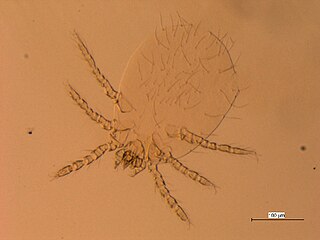
Morton Gould was an American composer, conductor, arranger, and pianist.

Trombicula, known as chiggers, red bugs, scrub-itch mites, or berry bugs, are small arachnids in the Trombiculidae family. In their larval stage, they attach to various animals and humans, then feed on skin, often causing itching and trombiculosis. These relatives of ticks are nearly microscopic, measuring 0.4 mm (0.01 in), and have a chrome-orange hue. A common species of harvest mite in North America is Trombicula alfreddugesi.
Joseph Dwight Newman was an American jazz trumpeter, composer, and educator, best known as a musician who worked with Count Basie during two periods.

Charles Randolph "Chubby" Johnson was an American film and television supporting character actor with a genial demeanor and warm, country-accented voice.
The Journal of International Affairs is a biannual academic journal covering foreign affairs. It is edited by graduate students at the School of International and Public Affairs at Columbia University. It was established in 1947 as a nonprofit organization. The editor-in-chief is Se Lin "Sharon" Joh.

The Vanguard Press was a United States publishing house established with a $100,000 grant from the left-wing American Fund for Public Service, better known as the Garland Fund. Throughout the 1920s, Vanguard Press issued an array of books on radical topics, including studies of the Soviet Union, socialist theory, and politically oriented fiction by a range of writers. The press ultimately received a total of $155,000 from the Garland Fund, which separated itself and turned the press over to its publisher, James Henle. Henle became sole owner in February 1932.

Joseph Benjamin Wilder was an American jazz trumpeter, bandleader, and composer.

Brachypylina is a group of oribatid mites, variously listed as a suborder, infraorder, or a cohort.

Neotrombicula is a genus of mites in the family Trombiculidae. Species of this genus are found throughout Europe and North America.

The Laelapidae are a family of mites in the order Mesostigmata. The family is also referred to in the literature as Laelaptidae, which may be the correct spelling.

Don Megowan was an American actor. He played the Gill-man on land in The Creature Walks Among Us, the final part of the Creature from the Black Lagoon trilogy.
Trombiculini is a tribe of chiggers belonging to the family Trombiculidae.









